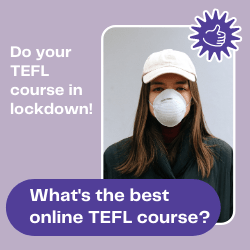If you’re unprepared for your class, it will lack structure and direction, your students will get bored or unruly, and you’ll lose control of the classroom. At worst, the school will notice you’re not up to the job and you’ll be sent packing.
That’s why spending time planning effective lessons is important.
A prepared teacher will make sure they always walk into a classroom knowing what they will teach and how they will teach it. A prepared teacher will always have a back-up plan in case their lesson falls short of expectations. And a prepared teacher will always have a ‘mystery bag’ to keep students on their toes!
Public schools vs private centers in China
One of the key differences between China's public and private centers is lesson planning.
In the public school system, there is generally a prescribed text book which you can loosely follow. However, lesson planning is done in your own time, given the relatively low number of contact hours you’ll teach.
If you like the idea of being flexible and creative when it comes to lesson planning, then working in one of China's public schools might suit you.
In private centers and language institutes across China, the syllabus is well developed and you would generally follow it to the letter. Lesson plans have already been created for you – it’s just a matter of familiarizing yourself with them to make sure you know what you need to do in class.
As part of your contract, you may need to spend a certain amount of time in the office. This is known as ‘office hours’. It’s during this time that you can review lesson plans, prepare, mark papers, and so on.
If you like the idea of working off set lesson plans and not having to create your own, then working in a private center may be ideal for you.
What is the best way to plan lessons?
A popular methodology for teaching English as a foreign language, which you may learn as part of your TEFL course, is 3Ps or PPP. This stands for presentation, practice and production.
Presentation involves introducing an aspect of language in a context that students can relate to. You could draw pictures and use body language to help get your message across.
In the second stage, practice, students are given an activity to practice what they’ve just learnt. This is done in a controlled setting with some involvement from the teacher.
Production goes one step further, whereby students use the language in context, often with another student or in a group. In this stage there is less control and the teacher gives minimal assistance.
To help you, we offer a range of lesson plans for different levels, from kindergarten right through to university. Download as many as you want for free.



